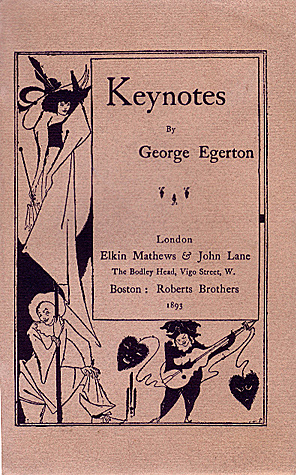George Egerton facts for kids
Mary Chavelita Dunne Bright (born Mary Elizabeth Annie Dunne; 14 December 1859 – 12 August 1945), known by her pen name George Egerton, was a famous writer. She wrote short stories, novels, and plays. She was known for exploring people's feelings and for new ways of telling stories. George Egerton also spoke out about women needing more freedom.
Many people think Egerton was a very important writer in the late 1800s. She was part of the "New Woman" movement. She also helped start modern writing styles in English. She was born in Melbourne, Australia, but grew up in Ireland. She always felt very Irish.
Contents
Life Story of George Egerton
George Egerton was born Mary Elizabeth Annie Dunne in Melbourne, Australia, in 1859. Her mother was Welsh and her father was Irish. When she was very young, her family moved a lot. They lived in Australia, New Zealand, and Chile.
Growing Up in Ireland
Most of her childhood was spent near Dublin, Ireland. She always said she felt "intensely Irish." She went to school in Germany for two years as a teenager. There, she showed a talent for art and languages.
However, she had to stop her dream of becoming an artist. Her mother died when George was fourteen. After that, she had to take care of her younger brothers and sisters. She later trained to be a nurse.
Early Adult Life and Marriages
As a young adult, Egerton spent two years in New York. She tried to earn money to help her family, but it didn't work out. Some of her experiences in the USA later inspired her 1898 novel, The Wheel of God.
She then moved back to England. In 1888, she married Henry Peter Higginson. This marriage lasted until he died a year later.
After his death, Egerton moved to Norway for two years. This time was very important for her ideas and writing. In Norway, she read many famous writers like Henrik Ibsen and Friedrich Nietzsche. She also met Knut Hamsun, who later won the Nobel Prize for Literature. Her brief friendship with Hamsun inspired her short story "Now Spring Has Come."
Egerton was the first person to translate Hamsun's novel Hunger into English in 1899. This helped English readers discover his work.
In 1891, she married Egerton Tertius Clairmonte. He didn't have much money, and she felt bored living in rural Ireland. This led her to start writing fiction. She chose the pen name "George Egerton" to honor both her mother and her husband, Clairmonte.
George Egerton's Writing Career
Egerton's first book of short stories was called Keynotes. It was published in 1893 and had illustrations by Aubrey Beardsley. This book was very popular in both America and England. Because of its success, Egerton became a well-known writer. She was interviewed in major magazines and even made fun of in Punch.
Her Ideas and Beliefs
George Egerton's writing was very bold for her time. She strongly called for women to get an education and to be financially independent. She also believed women should have more freedom in their lives.
She was closely linked to the "New Woman" movement. This movement supported women's independence. However, Egerton sometimes said she felt "embarrassed" by this simple label.
Interestingly, while she was a strong supporter of women's rights, she often kept her distance from the women's suffrage movement (which fought for women's right to vote). But in her private letters, she clearly supported women getting the vote. For example, she wrote in 1908 that women were smarter than men on average. She also said that if women paid taxes, they should get to vote.
Her stories often questioned traditional religious ideas. They also included discussions about atheism (not believing in God). She was critical of marriage as it was set up back then. Many of her main characters challenged the ideas of Victorian society. They wanted women to have more choices in their relationships and family life.
Her Impact on Other Writers
Egerton's new writing style and her strong ideas about women's freedom have kept her books popular with scholars today. The famous writer Thomas Hardy said her work influenced his own characters.
Holbrook Jackson noted that Egerton was the first to mention Friedrich Nietzsche in English literature. She wrote about Nietzsche in Keynotes in 1893. This was three years before his works were even translated into English.
Her experiments with writing style and content also paved the way for later modern writers. These include Virginia Woolf, James Joyce, and D. H. Lawrence. Her 1898 novel The Wheel of God is even thought to have influenced parts of James Joyce's famous novels.
List of George Egerton's Works
- Keynotes. London: Elkin Mathews and John Lane, 1893.
- Discords. London: John Lane at The Bodley Head, 1894.
- "A Lost Masterpiece." The Yellow Book Vol. 1 (April 1894): 189–96.
- "The Captain's Book." The Yellow Book Vol. 6 (July 1895): 103–16.
- Symphonies. London: John Lane at The Bodley Head, 1897.
- Fantasias. London: John Lane at The Bodley Head, 1898.
- The Wheel of God. London: Grant Richards, 1898.
- Rosa Amorosa: The Love-Letters of a Woman. London: Grant Richards, 1901.
- Flies in Amber. London: Hutchinson, 1905.
- "A Keynote to Keynotes." Ten Contemporaries: Notes Toward Their Definitive Bibliography. Ed. John Gawsworth. London: Ernest Benn, 1932.
- A Leaf from The Yellow Book: The Correspondence of George Egerton. Ed. Terence de Vere White. London: Richards, 1958.
Translations and Adaptations
- Ola Hansson: Young Ofeg's Ditties. London: J. Lane, 1895.
- Knut Hamsun: Hunger. London: L. Smithers, 1899.
- Henri Bernstein: The Whirlwind (1910)
- Henri Bernstein: The Attack (1912)
- Pierre Loti and Judith Gautier: The Daughter of Heaven (1912)
Plays
- His Wife’s Family (1907)
- Backsliders (1910)
- Camilla States Her Case (1925)


